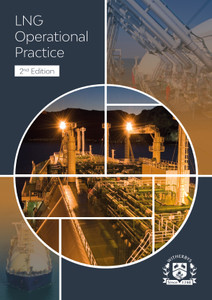
This SIGTTO publication covers every aspect of the safe handling of bulk liquid gases (LNG, LPG and chemical gases) on board ships and at the ship/shore interface.
Liquefied Gas Handling Principles on Ships and in Terminals emphasises the importance of understanding the physical properties of gases in relation to the practical operation of gas handling equipment on ships and at terminals.
In the sixteen years since this publication was last updated, the liquefied gas shipping and terminal industry has undergone considerable change.?This revision reflects these changes, providing updated information on ship design, propulsion systems, size of fleet, floating regasification and reliquefaction, Arctic LNG, containment systems, efficiency increases in operations, ship capacities, technology, best practice and legislation.
This title incorporates 'Quantity Calculations LPG and Chemical Gases, 2nd Edition' (SIGTTO).
'Liquefied Gas Handling Principles', after three previous editions, is firmly established as the standard reference work for the industry’s operational side. This publication deals with the safe handling of bulk liquid gases (LNG, LPG and chemical gases) on board ships and at the ship/shore interface at terminals. It is an indispensable companion for all those training for operational qualifications and an accessible work of reference for those already directly engaged in liquefied gas operations.
The publication has been written primarily for serving ships’ officers and terminal staff who are responsible for cargo handling operations, but also for personnel who are about to be placed in positions of responsibility for these operations. Its appeal also extends to many others, not directly involved in the operational aspects of the industry, who require a comprehensive and ready reference for technical aspects of their businesses.
Liquefied Gas Handling Principles emphasises the importance of understanding the physical properties of gases in relation to the practical operation of gas-handling equipment on ships and at terminals.
It is recommended that a copy of this publication be kept — and used — on board every gas tanker and in every terminal to provide advice on operational procedures and the shared responsibility for safe and efficient operations.
Contents
CHAPTER
1
Overview
of
the
Carriage
of
Liquefied
Gases
by
Sea
CHAPTER
2
Properties
of
Liquefied
Gases
CHAPTER
3
Liquefied
Gas
Carrier
Types
CHAPTER
4
The
Ship
–
Cargo
Equipment
CHAPTER
5
The
Terminal
CHAPTER
6
The
Ship/Shore
Interface
CHAPTER
7
Cargo
Handling
Operations
CHAPTER
8
Cargo
Measurement
and
Calculation
CHAPTER
9
Health,
Environment
and
Safety
Management
Appendix
Index
Other SIGTTO Publications You May be Interested In
Reference Tables and Diagrams
The Society of International Gas Tanker and Terminal Operators (SIGTTO) is an international body established for the exchange of technical information and experience, between members of the industry, to enhance the safety and operational reliability of gas tankers and terminals. Learn more: https://www.sigtto.org/about-us/
- Number of Pages:
- 568
- ISBN:
- 9781856097147
- Binding Format:
- Hardback
- Book Height:
- 304 mm
- Book Width:
- 215 mm
- Weight:
- 2.7 kg
- Author:
SIGTTO
- Published Date:
- July 2016
- Product Catalogue:
- Definitive Guides PDF
- Preview:
- Yes
- Publication Date:
- July 2016






